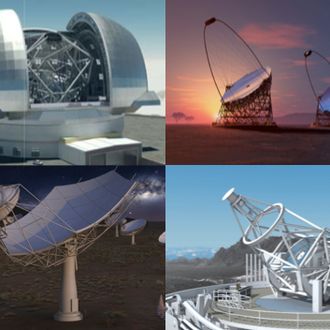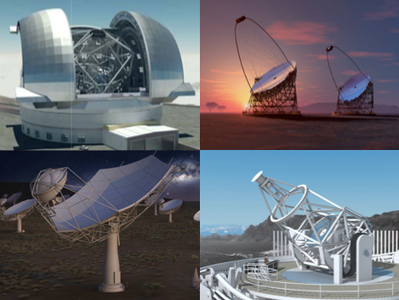Astronomy in the European Open Science Cloud
The first quarter 2019 sees the exciting launch of ESCAPE, one out of the five successfully retained Cluster projects, which the European Commission supports with €16 million to boost the implementation of the European Open Science Cloud (EOSC). The Leibniz Institute for Astrophysics Potsdam (AIP) will develop a classification engine which automatically identifies, classifies, and provides physical properties of solar and stellar atmospheres.
Nowadays, machine learning techniques are being used in many fields of science. Instead of developing complex codes, a computer learns how to solve otherwise time-consuming problems that involve much manual labor. Typically, a huge amount of data is a prerequisite to teach the computer how to identify patterns in the training set and enabling it without any human interaction to recognize similar features in new data.
European Open Science Cloud (EOSC) is a cloud for research data in Europe allowing for universal access to data; a single online platform where all European researchers will be able to find, access and re-use data produced by other scientists, and to deposit, analyse and share data they have been paid to produce. EOSC will help increase recognition of data intensive research and data science. Its architecture is developed as a data infrastructure commons serving the needs of scientists, providing both common functions and localised services delegated to community level. EOSC will federate existing resources across national data centres, European e-infrastructures and research infrastructures by gradually opening up its user base to the public sector and industry.
ESCAPE – « The European Science Cluster of Astronomy & Particle Physics ESFRI Research Infrastructures » answers the EOSC ambition in bringing People, Data, Services, Training, Publications, Projects & Organisations, all together in an integrated and federated environment. The project is led by CNRS, the French public research organisation, with a consortium of 31 partners including 27 European partner institutions.
The Optical Solar Physics group and the Super Computing and E-Science section at AIP will develop a Classification Engine for Solar and Stellar Spectra, which automatically identifies, classifies, and provides physical properties of solar and stellar atmospheres. This contribution by AIP to Escape's Foundation for Competence for Software and Service Innovation (COSSI) is embedded in a major effort bringing together machine and deep learning techniques from all branches of astronomy, astrophysics, solar physics, and high-energy particle physics.
Further information
ESCAPE press release and further information




